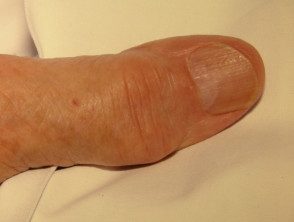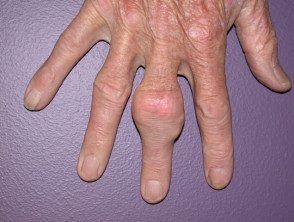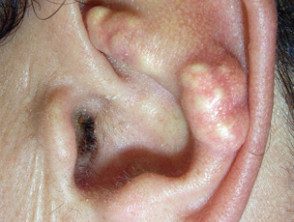Background
Gout is a common disorder that affects about 1% of the population. It is caused by an excess of uric acid, which exists as ionized urate in the blood. Crowded plasma Urate (blood levels greater than 0.42 mmol/L) can slowly form monosodium urate (MSU) crystals that are deposited in the joints, kidneys, and soft tissues, eventually resulting in arthritis, kidney damage, and lumps under the skin, respectively.
In healthy individuals, uric acid/urate is formed after eating certain high-protein foods. Usually, most of the uric acid is excreted by the kidneys in the urine. Excess urate in the blood can result from:
- A diet rich in animal protein, especially meat and seafood.
- Moderate to high intake of alcohol, especially beer.
- High intake of fructose, a sugar found in sugary soft drinks and fruit juices (apples and oranges).
- Being overweight: gout is associated with metabolism syndrome.
- Some medications, including diuretics, low-dose aspirin, and cyclosporine.
- Kidney disease can reduce urinary excretion of uric acid.
- Overproduction of uric acid can occur in disorders that cause high cell turnover, such as some myeloproliferative disorders (excessive numbers of cells produced by the bone marrow) and some types of anemia (hemolytic anemia and pernicious anemia).
Other risk factors for gout include:
- Having a family history of gout.
- Age: In general, uric acid levels are elevated for 20 years before gout develops. In men, uric acid levels rise at puberty, so gout is often diagnosed in the fourth to sixth decades of life. Estrogen protects young women from gout; Uric acid levels rise at menopause, and gout is often diagnosed in the sixth to eighth decades of life.
Clinical features of gout.
In most cases, the first attack of gout presents with extreme pain and swelling in a single joint, often the big toe (podagra). The pain begins abruptly, and the joint is red, hot, and extremely tender. Occasionally, the first attack of gout affects multiple joints simultaneously. Patients may have a fever, particularly if many joints are involved. Untreated gout attacks usually last 7-10 days, after which the patient may be symptom-free until the next attack.
acute gout

acute gout
Initially, gout attacks may be months or years apart. A gout attack can be caused by:
- A sudden increase in the level of urate in the blood, e.g. after an episode of binge eating, eating a large amount of protein-rich foods, dehydration, traumaor start a medication that increases uric acid.
- A sudden drop in the level of urate in the blood, e.g. after starting a drug that lowers uric acid.
If gout is not treated, the following complications can occur:
- Attacks become more frequent, last longer, and involve more joints.
- Collections of MSU crystals, called tophi, develop in the soft tissues and appear as firm lumps under the skin. Tophi usually develop around 10 years after the first attack of gout in untreated patients and are commonly found around the elbows, hands, and feet. Tophi contain a white pasty material, and as they enlarge they work their way to the surface of the skin to drain. Small breast The tracts (tunnels) may develop and secrete white pasty material. Alternatively, a large blister may form, which ruptures leaving continuous drainage ulcer.
- Tophi develop in and around the joints, leading to their destruction and chronic (long-term, ongoing) joint pain and stiffness.
- Panniculitis (inflammation of fat under the skin) is a rare complication of gout. This is presented as nodular (lumps) leg lesions that ulcerate and drain fluid containing MSU crystals.
- MSU crystals can be deposited in the kidneys causing inflammation and scarring (called chronic urate nephropathy). Kidney stones are also common in patients with gout.
Gouty tophi

Gouty tophi

Gouty tophi

Gouty tophi
More pictures of gouty tophi...
How is gout diagnosed?
- Gout is diagnosed on initial attack using a needle and syringe to draw a small sample of fluid from around the affected joint space. MSU crystals can be identified under the microscope. This test is also important to rule out other causes of a swollen joint, such as infection.
- If a biopsy sample is taken, the sample should be placed in alcohol, since formalin dissolves urate crystals.
- Joint radiographs may show findings consistent with gout, but these findings alone are not diagnostic. Also, early in the disease, radiographs may be normal or show Soft fabric just swelling
- Urate levels may be elevated in the blood, but this finding alone is not diagnostic. In some cases, the level may even be below urate saturation.
What is the treatment for gout?
The treatment of gout is divided into 3 phases: treatment of the acute attack, uric acid lowering therapy, and prevention of acute flare-ups.
Treatment of an acute attack of gout
Treatment options to ease the pain of an acute attack of gout include:
- NSAID (non-steroidal antiinflammatory drugs): These are generally the drugs of choice for most patients who have no underlying health problems. Aspirin should be avoided as it can alter urate levels and worsen the attack.
-
Corticosteroids: If it's just a joint, corticosteroids can be injected directly into the joint space. Otherwise, oral prednisone 20-40mg daily for 10-14 days is prescribed.
-
Colchicine: Until recently, colchicine was the treatment of choice for acute gout. However, due to recent safety concerns, colchicine is now only recommended if NSAIDs or corticosteroids are inappropriate. Treatment with high-dose colchicine is no longer recommended due to its toxicity.
The above medications do not prevent joint damage, tophi, or kidney disease.
Medications to lower uric acid.
Long-term treatment of gout focuses on lowering urate levels, aiming for levels below 0.36 mmol/L, or better yet, below 0.30 mmol/L. These medications can prevent attacks of gouty arthritis. and prevent MSU crystals from depositing in tissues. Medications that lower urate levels should not be started during an acute attack of gout; instead, they should start a few weeks after the attack has been resolved.
Alopurinol
Allopurinol is an effective treatment for lowering uric acid, but it has a number of side effects and drug interactions.
Dermatologic side effects of allopurinol range from mild morbilliform eruption (similar to measles eruption, which resolves when the drug is stopped) to Stevens-Johnson syndrome / toxic epidermal necrolysis and drugs hypersensitivity syndrome. Drug hypersensitivity syndrome is rare but potentially very serious. It usually occurs within the first 6 weeks of treatment, but some cases have been reported up to 12 weeks after starting allopurinol.
The dose of allopurinol should start low at 100 mg daily. The dose should be increased every 3-4 weeks, while monitoring the blood urate level, aiming for a fall of less than 0.04 mmol/L each month and an eventual level below 0.36 mmol/L. Some patients may require doses of 600 to 900 mg daily to achieve this. The dose should be lower in people with kidney disease.
Febuxostat
Febuxostat (trade name Adenuric®) is a new gout medication that can be used to lower urate levels in patients with kidney failure or who are intolerant to allopurinol. Phase III clinical trials have reported febuxostat to be more effective than allopurinol at a dose of 300 mg. It is funded in New Zealand for patients resistant to treatment or those not suitable for allopurinol, with Special Authority criteria.
Probenecid
Probenecid is an alternative uric acid-lowering medication with fewer significant side effects than allopurinol.
It is important to drink plenty of fluids while taking probenecid to flush out uric acid and prevent crystals from forming in the kidneys or urinary tract.
The starting dose of probenicide is usually 250 mg twice daily, but this may need to be increased to 1 g twice daily.
benzbromarone
Benzbromarone is a new gout medication that can be used to lower urate levels where allopurinol and/or probenecid are found contraindicated, not tolerated, or are not effective. Liver function should be monitored with benzbromarone as it is reported to cause hepatic toxicity.
Prevention of acute outbreaks
Acute flare-ups of gout can be precipitate by the sudden drop in blood urate that occurs when uric acid-lowering drugs are started. For this reason, it is important to take a low (preventive) dose of a NSAID or colchicine to reduce the chance of an outbreak developing. In patients who cannot take any of these medications, an oral corticosteroid may be considered. Patients who only have occasional attacks of gout may need to take these medications for 2-3 weeks. While patients with multiple tophi may need to continue treatment for months.
General measures in gout
Although lifestyle changes rarely result in adequate plasma urate lowering without medication, the following are recommended.
- Weight loss in obese patients.
- Reduction of alcohol intake.
- Avoid soft drinks sweetened with fructose.
- Restrict intake of liver, kidneys, fish, yeast extracts, red meat
- Consider alternative medications if you take diuretics for hypertension
